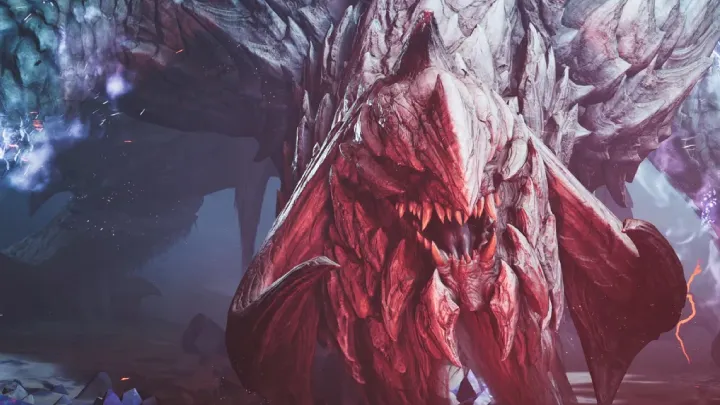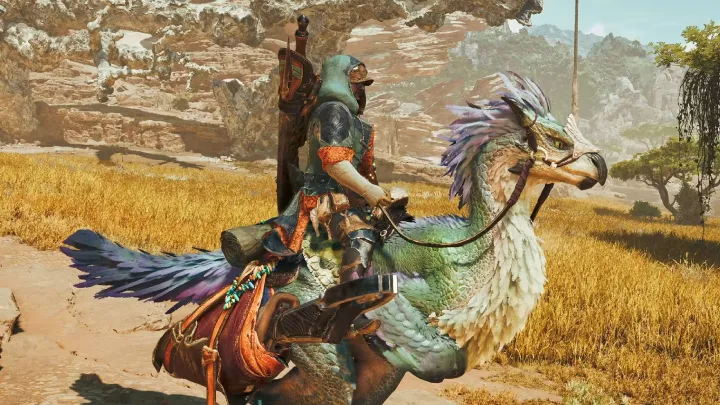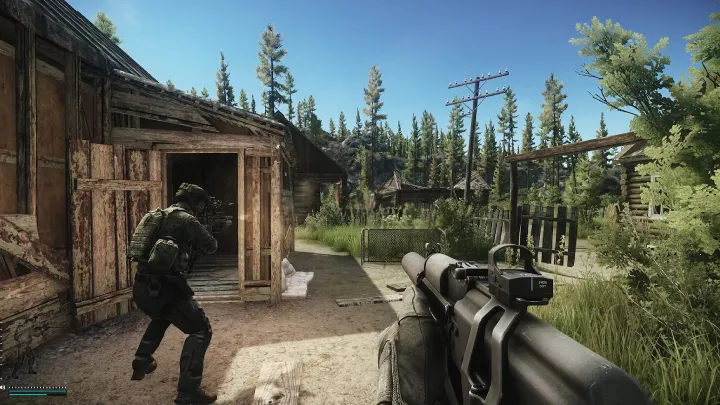Monster Hunter Wilds is the next evolution in Capcom’s legendary Monster Hunter series, taking players into vast, dynamic ecosystems filled with danger, discovery, and adventure. The game challenges you to track, hunt, and capture massive creatures in an ever-changing world that reacts to your presence and the environment. Whether you’re a veteran hunter or a newcomer, understanding how to play effectively is essential to surviving and thriving in the wild. This guide will teach you how to master Monster Hunter Wilds step by step—from combat mechanics and gear crafting to hunting strategies and ecosystem awareness.
Understanding the World of Monster Hunter Wilds
Monster Hunter Wilds expands on the open-world design of Monster Hunter World, offering seamless exploration across massive regions. Each biome is alive, with weather changes, day-night cycles, and creatures that interact with one another naturally.
Before beginning your journey, spend time familiarizing yourself with the game’s main hub and the surrounding zones. Each region has distinct ecosystems—such as deserts, jungles, and plains—that affect monster behavior and available resources.
The environment is not just a backdrop; it plays an active role in hunts. For example, storms can alter monster patterns or make certain species more aggressive. Learning these dynamics is key to gaining an advantage in every hunt.
Learning the Basics of Hunting

At its core, Monster Hunter Wilds revolves around the hunt. You will track monsters, engage in intense battles, and harvest materials from your victories. Each hunt requires preparation and awareness.
To begin a hunt, you must:
- Accept a quest from the hub area.
- Equip suitable armor and weapons.
- Gather items like potions, traps, and whetstones.
Tracking monsters involves following footprints, claw marks, and environmental clues. Once you locate your target, the real challenge begins—combat. Learning how to read monster behavior and strike at the right moment determines whether you succeed or fail.
Choosing the Right Weapon
Monster Hunter Wilds continues the series tradition of offering a diverse arsenal of weapons. Each weapon class has its own style, advantages, and learning curve.
Here are a few examples:
- Great Sword: High damage, slow speed, ideal for players who value timing.
- Dual Blades: Fast attacks and mobility, perfect for hit-and-run strategies.
- Bow: Excellent for ranged attacks and elemental damage.
- Insect Glaive: Allows aerial movement and mounting monsters.
New players should experiment with different weapons during early hunts to discover what fits their playstyle best. Each weapon feels distinct, and mastering one can completely change how you experience the game.
Understanding Monster Behavior
Every monster in Monster Hunter Wilds has its own personality, territory, and behavioral patterns. Recognizing these traits helps you anticipate attacks and plan effective strategies.
For instance, some monsters are territorial and will engage each other in turf wars. Others may flee when injured, leading you into new areas of the map. Monsters also adapt to environmental changes such as sandstorms or rainfall, which can alter their movement and attack style.
By studying monsters closely, you’ll notice visual cues that indicate their next move—a raised tail before a slam, or glowing eyes before a charge. Learning these signs is essential for dodging and countering effectively.
Preparing for the Hunt
Preparation is everything in Monster Hunter Wilds. Success depends on how well you plan before setting out.
Here’s what to do before each hunt:
- Eat a meal at the hub to boost health and stamina.
- Equip armor with elemental resistance suited to your target.
- Stock up on traps, healing items, and ammunition.
- Check the weather forecast for potential changes in monster behavior.
Preparation also includes upgrading your weapons and armor. Regularly visit the blacksmith to craft new gear using materials from your previous hunts. Stronger equipment will help you face tougher monsters as the game progresses.
Utilizing the Environment in Battle

One of the most innovative aspects of Monster Hunter Wilds is the ability to use the environment strategically. The landscape can be both your ally and your enemy during battles.
For example:
- Lead monsters into hazardous terrain such as cliffs or mud pits.
- Use natural traps like falling rocks to deal extra damage.
- Hide in tall grass to avoid detection and prepare sneak attacks.
Weather effects also play a role. Rain can slow certain monsters or reduce fire-based attacks, while sandstorms can obscure vision but provide cover. Learning how to manipulate these factors gives you a tactical advantage.
Team Hunting and Multiplayer Strategies
Hunting alone is thrilling, but Monster Hunter Wilds truly shines in multiplayer mode. Up to four hunters can join forces to tackle powerful creatures, share strategies, and revive each other during tough fights.
To succeed in team hunts:
- Coordinate roles. Assign one player as a tank, one as a healer, and others as damage dealers.
- Communicate constantly using voice chat or signals.
- Avoid crowding around the monster—spread out to cover more ground.
- Combine abilities and traps for maximum efficiency.
Teamwork transforms even the most difficult hunts into exhilarating victories. Sharing loot and strategies also helps you learn faster and build stronger bonds with other players.
Crafting and Upgrading Equipment
Crafting is the heart of progression in Monster Hunter Wilds. Every monster you defeat drops materials that can be used to forge or enhance weapons and armor.
The crafting system is deeper than ever. Different monster parts yield unique bonuses, allowing you to tailor your build to your preferred style. For example:
- Dragon scales can boost elemental resistance.
- Fangs and claws enhance attack power.
- Rare gems unlock special set bonuses.
Regularly upgrading your equipment ensures you remain competitive against stronger foes. As you progress, experiment with different gear combinations to find the perfect balance of offense, defense, and speed.
Mastering Advanced Combat Techniques
Once you’ve grasped the basics, it’s time to refine your skills with advanced combat mechanics. These techniques separate casual hunters from true masters.
Key advanced techniques include:
- Perfect dodging: Timing your evasion just before impact grants a temporary invulnerability window.
- Counterattacks: Some weapons allow you to block and retaliate instantly.
- Mounting monsters: Jumping attacks or aerial moves can let you ride monsters and deal massive damage.
- Elemental exploitation: Use the right element against each monster for greater damage.
Mastering these mechanics takes time and patience, but once learned, you’ll be able to take on even the most formidable beasts with confidence.
Exploring Side Quests and Hidden Secrets
Beyond the main hunts, Monster Hunter Wilds is filled with side activities and hidden secrets. These not only add depth to the experience but also reward you with valuable items and lore.
Side quests include:
- Gathering rare materials in dangerous areas.
- Helping NPCs rebuild settlements.
- Discovering hidden monsters or secret regions.
Exploration also rewards you with new mounts, companions, and environmental bonuses. Don’t rush through the main story—take time to enjoy the world and uncover its mysteries.
Improving as a Hunter Over Time
Becoming a great hunter is not just about better gear or stronger attacks—it’s about knowledge and discipline. Each hunt teaches you something new about timing, positioning, and patience.
To improve consistently:
- Review your performance after each hunt. Identify what worked and what didn’t.
- Watch how monsters react to your tactics.
- Practice with different weapons to expand your versatility.
Progress in Monster Hunter Wilds is gradual, but deeply rewarding. Every small improvement brings you closer to mastery.
Conclusion
Monster Hunter Wilds is more than just a hunting game—it’s an evolving ecosystem of discovery, challenge, and growth. Learning how to master it requires dedication, observation, and strategy. By understanding the world, preparing effectively, and adapting to each unique battle, you can become one of the greatest hunters in the Wilds.
Each victory feels earned, every monster conquered adds to your legend, and every exploration reveals something new about the living world around you. Whether you play solo or with friends, Monster Hunter Wilds offers endless opportunities to test your skills, improve your tactics, and enjoy one of the most immersive action experiences ever created.
Summary:
Master Monster Hunter Wilds by learning hunting tactics, crafting powerful gear, and using the dynamic environment to defeat massive creatures.

















